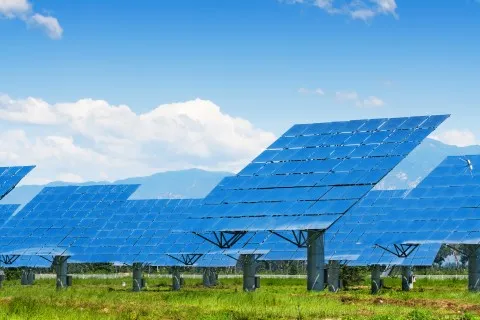
India went on bidding frenzy for renewables projects before 2017 ended
Auctions worth 1.250MW were completed a week before December came to a close.
Three major auctions were completed before December ended – two for solar projects by SECI (Bhadla solar park 500 MW and 250 MW respectively) and one for wind projects by Gujarat Urja Vikas Nigam (GUVNL, fully owned by Gujarat government) (500 MW).
According to Bridge to India, the solar projects were won by Hero Future (300 MW), Softbank (200 MW), Azure (200 MW) and ReNew (50 MW) at tariffs between INR 2.47-2.49/ kWh (USD 0.04), a very slight increase over the previous auction tariff in Bhadla solar park back in May 2017.
Wind tariffs, on the other hand, fell even further to INR 2.43-2.45/ kWh. Projects were won by Sprng (owned by Actis, 197 MW), KP (30 MW), Verdant (100 MW), Engie (30 MW), Powerica (50 MW) and ReNew (93 MW).
Here's more from Bridge to India:
In the previous Bhadla auctions in May 2017, tariffs had touched an all-time low of INR 2.44/ kWh. Since then, module prices have risen by around 20% to USD 0.36/W. Including other cost inflationary factors such as 7.5% import duty on modules and 5% GST, capex has increased cumulatively by about 20% in the last six months. It is remarkable that tariffs have remained relatively unchanged despite such significant increase in capex and a very real risk of anti-dumping/ safeguard duties on modules. There is no material change in any other factors including solar park charges or financing costs in this period.
As per our analysis, module prices would need to fall to an impossible USD 0.16/W (55% reduction in 10 months) for winning bidders to earn a project IRR of 11%. This ignores the impending risk of anti-dumping duties.
The fall in wind tariffs, 33% in just ten months is equally stunning and hard to explain. There is no underlying industry trend that justifies such a significant tariff reduction.
The only way to explain the latest tariffs is that the developers, concerned by slowdown in power procurement, are anxious to win capacity at any cost. We have maintained for some time that renewable auction tariffs are becoming unsustainable, but the problem is getting even worse. Clearly, the industry is not convinced by the MNRE’s new exuberant plan of auctioning 17 GW of solar and 3-4 GW of wind projects by March 2018. But not only are the developers taking undue risk in these auctions, there is also a growing hazard that as and when there is a tariff correction, the DISCOMs would walk away creating challenges for projects yet to come.











 Advertise
Advertise











